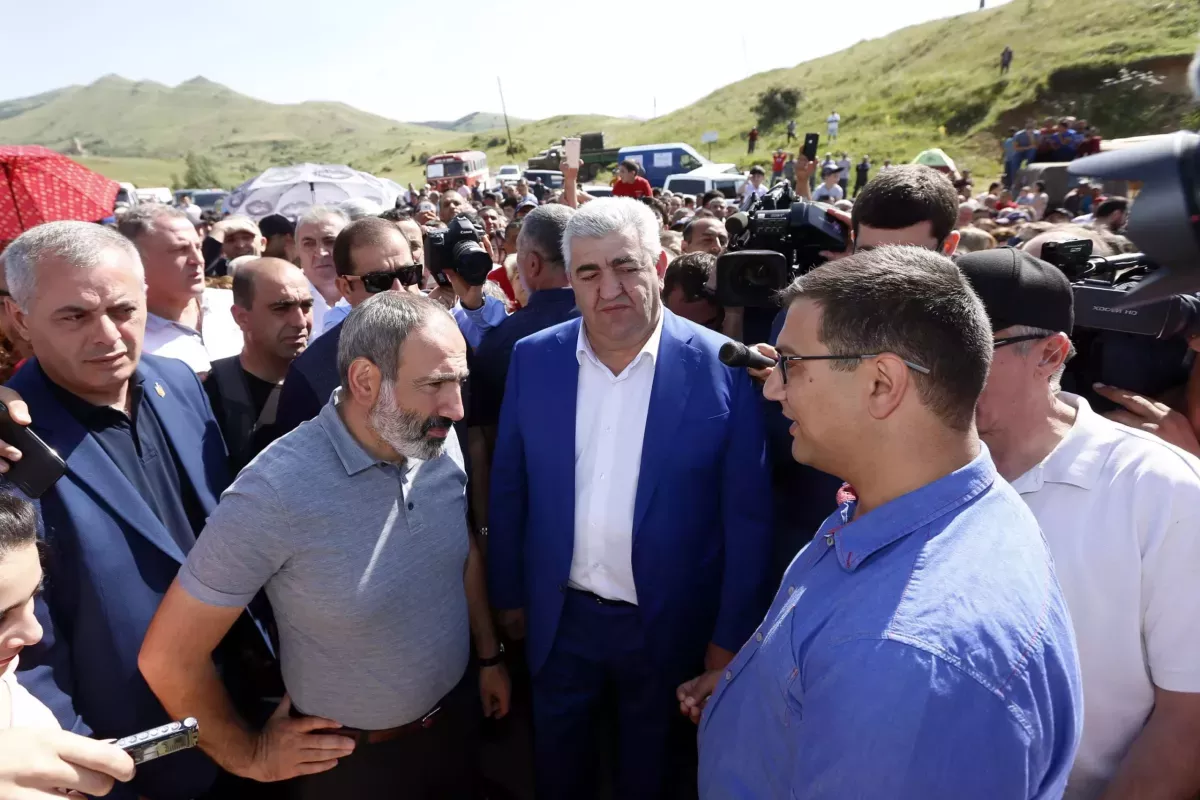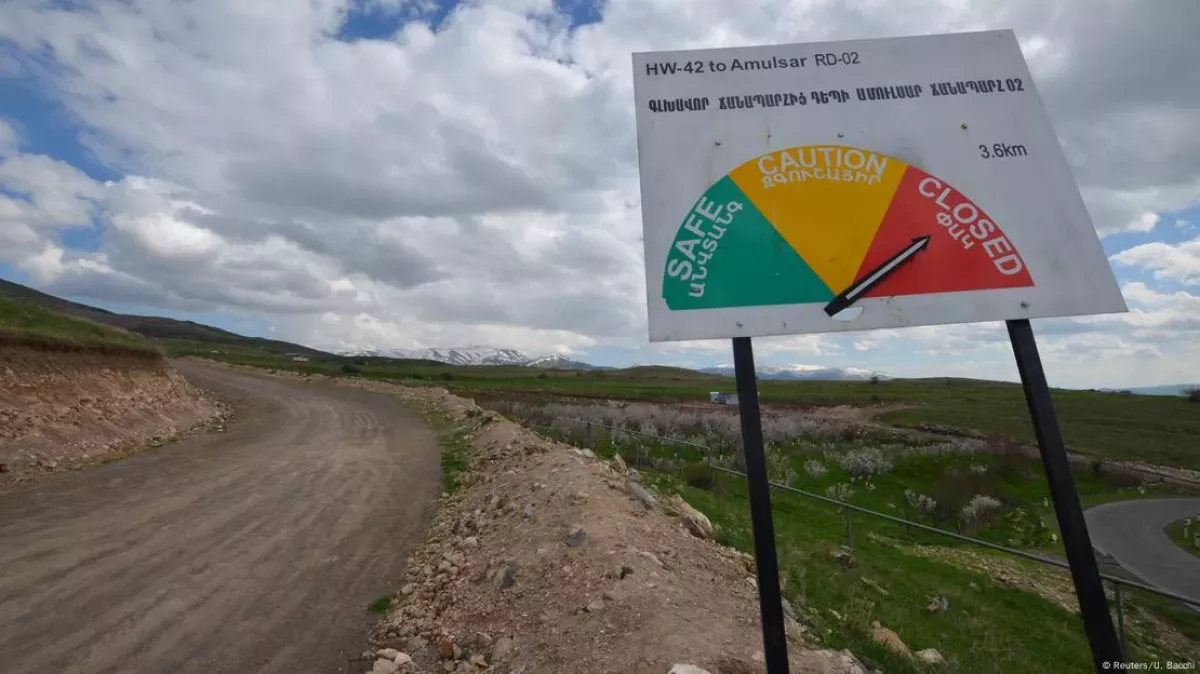Armenian elite against people and environment The “golden bomb” mechanism launched
Since the end of last year, Armenian authorities have increasingly spoken about launching the Amulsar mine. On February 27, the Armenian government provided Lydian Armenia with budgetary guarantees of up to $150 million for the development of the Amulsar gold deposit, in which the state acquired a 12.5% stake in the company. The start of operations has been announced for the fourth quarter of 2025, with a planned duration of 10 years and 4 months.
The government is promising the population a bright future: the planned extraction of 200,000 ounces of gold per year is expected to boost GDP by 1% annually, generate projected tax revenues of $120 million per year, and create 1,700 jobs.
Everything would seem fine, but, as they say, there are nuances. The fact is that the government attempted to initiate the launch of the mine six years ago, just a year after Pashinyan's team came to power.
On August 14, 2019, the Armenian Investigative Committee published the findings of an international expert group (the Lebanese company Elard), which concluded that the environmental risks associated with operating the Amulsar mine were minimal. Following this, more than 500 residents of Jermuk (Istisu, the largest settlement near the mine) staged a protest against the expert group's conclusions.
Some time later, demonstrators gathered in front of the Armenian government building, claiming that the investigation had presented inaccurate results of the Amulsar mine’s environmental assessment and that the study itself was incomplete. Activists demanded a personal meeting with Prime Minister Nikol Pashinyan to present their own research findings. Specifically, they warned that open-pit gold mining at Amulsar carried the risk of water contamination with sulfur and heavy metals.
At the time, environmental activists managed to defend their position and effectively block the project's launch.

After 2020, Pashinyan’s government resumed negotiations with Lydian. By 2023, a memorandum of understanding had already been signed between the Armenian government, the Eurasian Development Bank, and Lydian Armenia.
As recent reports indicate, the mine is now set to operate at full capacity. Despite being aware of the environmental challenges associated with the project, as well as the expected public backlash, the Armenian authorities are now taking a firmer and more determined stance than they did six years ago.
Interesting—why now? It seems entirely logical that time was needed to fully seize control of the business. After all, the mine was initially opened during Robert Kocharyan’s presidency in 2006 and was actively being prepared for operation during Serzh Sargsyan’s term. It seems quite obvious that Sargsyan had a certain stake in this business.
But now, six years have passed. During this time, the business appears to have been completely removed from the influence of the "former" elites, meaning it is finally ready to generate profits. However, even here, things are not so simple. Armenia's mining policy today, just as six years ago, faces strong opposition from environmental activists—both domestically and internationally.
Recently, the NGO coalition Environment Protection First (EPF) published an interactive digital map in three languages, highlighting mining enterprises in Armenia that are polluting the environment of the South Caucasus and the Caspian Sea. This publication sparked a significant international response.
A total of 29 NGOs from 13 countries, outraged by the findings presented on the map, appealed to the Secretariat of the Espoo Convention (Convention on Environmental Impact Assessment in a Transboundary Context) and the Extractive Industries Transparency Initiative (EITI) regarding Armenia’s actions.
The statement also highlights: “The map (attached) illustrates that waste containing high concentration of heavy metals, generated from extractive industry operations in the territory of Armenia, is being discharged into transboundary rivers.”
Particular attention in the letter was given to the environmental damage inflicted on Azerbaijan: “the mining activities in the basins of rivers such as Pambak (Debed), Aparanchay, Zangichay, Vedichay, Arpachay, Okchuchay, Bazarchay etc.—positioned in the upper and middle reaches of the Kur and Araz rivers—have a direct adverse impact on Azerbaijan and neighboring countries. The severe chemical pollution of Araz River, the region’s large freshwater source, poses a significant threat to the population, biodiversity, soil, and aquatic life.”

The German Heinrich Böll Foundation published a report last year on Armenia’s Mining Industry Development Strategy, which was approved by the Armenian government in May 2023.
According to the report, the strategy raises serious concerns, including the lack of oversight over shadow investments, limited involvement of local communities, prioritisation of economic gains over environmental protection, weakening of local authorities' rights, the absence of a strategic environmental assessment, and a decline in environmental impact controls.
The foundation draws a grim conclusion: unless these shortcomings are addressed, the strategy could lead to further environmental degradation, weakened regulatory mechanisms, and even an increase in social conflicts.
It seems that the thirst for wealth has blinded Nikol Pashinyan and his team, as he appears oblivious to the risks this poses for him ahead of the 2026 elections. Or is he simply that confident in his victory?








